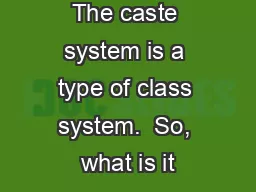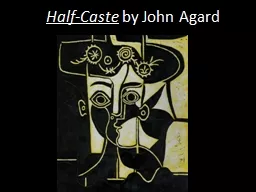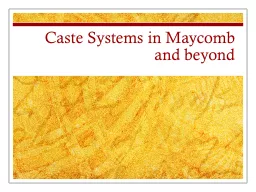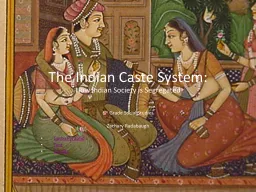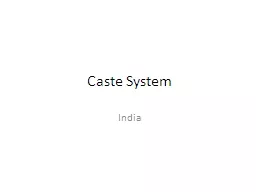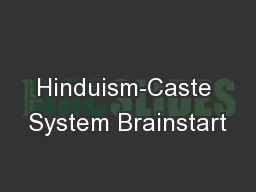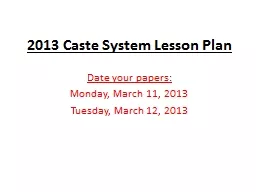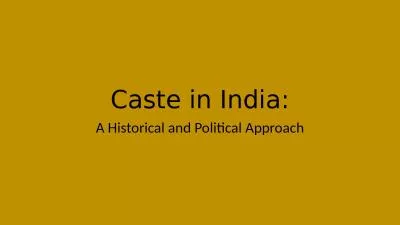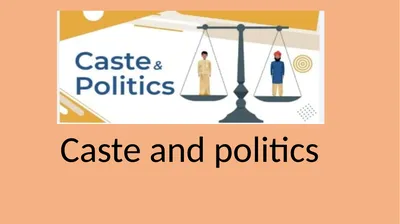PPT-Caste identity, Social Connections and Financial Incentives in the Workplace
Author : min-jolicoeur | Published Date : 2019-06-23
A Quasi Field Experiment in Indias Manufacturing Sector Farzana Afridi ISI Delhi Amrita Dhillon Kings College London Sherry Xin Li University of Texas Dallas Swati
Presentation Embed Code
Download Presentation
Download Presentation The PPT/PDF document "Caste identity, Social Connections and F..." is the property of its rightful owner. Permission is granted to download and print the materials on this website for personal, non-commercial use only, and to display it on your personal computer provided you do not modify the materials and that you retain all copyright notices contained in the materials. By downloading content from our website, you accept the terms of this agreement.
Caste identity, Social Connections and Financial Incentives in the Workplace: Transcript
Download Rules Of Document
"Caste identity, Social Connections and Financial Incentives in the Workplace"The content belongs to its owner. You may download and print it for personal use, without modification, and keep all copyright notices. By downloading, you agree to these terms.
Related Documents



